Chaotic conditions at Fremont plant: Tesla appears to be experiencing what CEO Elon Musk last year called “manufacturing hell” at its Fremont, Calif., assembly plant as pressure mounts to increase Model 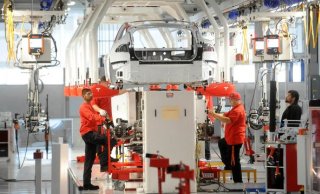 3 production. CNBC reported Wednesday that a current Tesla engineer estimated that 40% of parts made or received at the Fremont factory require rework. Sometimes, the parts need to be shipped back out of the plant for rework, and in other cases, vehicles seem to be pulled off the assembly line for repairs before being shipped out. Questions are being raised out how effective Musk has been managing the company through a difficult conversion to a mass market manufacturer. The electric automaker has been seeing other problems come up, including three of its top financial executives leaving recently. News came out earlier this week that the company stopped production in Fremont to adjust equipment that can increase the production rate. Production was reportedly suspended from February 20 to February 24 to make these changes. Some of the problems have also been traced back the Gigafactory battery plant near Reno, Nev. But most of the problems seem to be coming from the Fremont plant.
3 production. CNBC reported Wednesday that a current Tesla engineer estimated that 40% of parts made or received at the Fremont factory require rework. Sometimes, the parts need to be shipped back out of the plant for rework, and in other cases, vehicles seem to be pulled off the assembly line for repairs before being shipped out. Questions are being raised out how effective Musk has been managing the company through a difficult conversion to a mass market manufacturer. The electric automaker has been seeing other problems come up, including three of its top financial executives leaving recently. News came out earlier this week that the company stopped production in Fremont to adjust equipment that can increase the production rate. Production was reportedly suspended from February 20 to February 24 to make these changes. Some of the problems have also been traced back the Gigafactory battery plant near Reno, Nev. But most of the problems seem to be coming from the Fremont plant.
Maven bringing out shared GM vehicles: General Motors will be launching a pilot project this summer that will enable GM vehicle owners to rent out their vehicles when they aren’t using them. Testing will start this summer through the automaker’s Maven car-sharing unit, said people familiar with the matter. They’ll be able to have their vehicles available on Maven’s platform. Other drivers can rent out the car and will share their revenue with GM. It could be ideal for Uber and Lyft drivers who need a car to carry passengers and generate income. Maven customers could use the borrowed cars for typical car-sharing purposes, such as driving to work or going out to buy groceries or pick up their kids at school. It’s one of several moves GM is taking to become a major mobility service company.
Tesla opening burger joint in Santa Monica: Tesla will be opening up a what CEO Musk had tweeted about – “an old school drive-in, roller skates & rock restaurant” in the Los Angeles area where customers could grab a meal while their electric cars are being charged. The electric carmaker has applied for permits to build the restaurant and to place chargers outside the building in Santa Monica. If granted approval, Tesla will open up the burger joint at 1401 Santa Monica Blvd., which is currently being operated as a used-car lot. Tesla had already tried something similar last year by adding a “lounge” with a coffee shop at its Supercharger station in Kettleman City, near Bakersfield, Calif. The company is working at winning back disappointed customers who had complained they had nothing to do while their Tesla Model S, X, or 3, was being charged.
Ford wants to be hybrid vehicle leader: Ford Motor Co. wants to become known as an even greener carmaker than Toyota in the next few years. Ford wants to beat Toyota as the top seller of hybrid vehicles in  the U.S. in three years. Other plans include bringing in two off-road SUVs and creating hybrid or electric version of its other utility vehicles. It will eventually make up seven out of eight Ford vehicles sold each year starting in 2020, the company said.
the U.S. in three years. Other plans include bringing in two off-road SUVs and creating hybrid or electric version of its other utility vehicles. It will eventually make up seven out of eight Ford vehicles sold each year starting in 2020, the company said.
“We’re moving past hybrids as a science project,” Jim Farley, Ford’s president of global markets, told reporters. ”They’re an accepted, reliable technology, and we want to make them as emotional and valuable as the desirable EcoBoost.”
Light-duty trucks – pickups, utility vehicles, and vans – will make up 86% of its sales by 2020, up from about 70% today, the company said. The company will be offering a hybrid variant – traditional hybrid, a plug-in hybrid, or both – with every new utility it adds or refreshes from now on.

 going to soften up on fuel economy and emissions standards, and may be in conflict with what the state of California is planning to do. During an interview with Bloomberg News on Tuesday,
going to soften up on fuel economy and emissions standards, and may be in conflict with what the state of California is planning to do. During an interview with Bloomberg News on Tuesday,  Trucks is taking natural gas and electricity seriously as alternative fuels, but neither will be taking the lead away from diesel anytime soon. Daimler’s Freightliner Trucks subsidiary showed off several natural gas-powered trucks in the exhibit hall. The truck maker’s Fuso division is rolling out the eCanter electric medium-duty truck and the E-Fuso Class 8 electric truck. But for now, diesel is still the most efficient and cost-effective fuel, the Daimler executive said. While natural gas and battery-powered have become the most talked-about alternatives to diesel, their limitations are causing fleets to look more carefully at their options, she said. Charging and alternative fueling stations are very limited in comparison to ample diesel stations across the country. There’s also the question of realistic range for the vehicle. Electric trucks are particularly vulnerable to temperature, cargo loads, and speed traveled on highways in having enough range to carry out the freight hauling goals of fleet operators. Schaefer does see gains being made in new connected vehicle technologies, including active safety systems. She also supports the idea that green goes beyond tailpipe emissions; managers are encouraged to bring sustainability practices into their strategic planning while reducing cost and waste. Other highlights at the Green Truck Summit included XL Hybrids introducing the Ford F-150 XLP plug-in hybrid pickup, which can improve fuel economy by up to 50%. Lightning Systems showed off an electric Fort Transit cargo van that’s adding a hydrogen fuel cell vehicle that can extend range by 200 miles.
Trucks is taking natural gas and electricity seriously as alternative fuels, but neither will be taking the lead away from diesel anytime soon. Daimler’s Freightliner Trucks subsidiary showed off several natural gas-powered trucks in the exhibit hall. The truck maker’s Fuso division is rolling out the eCanter electric medium-duty truck and the E-Fuso Class 8 electric truck. But for now, diesel is still the most efficient and cost-effective fuel, the Daimler executive said. While natural gas and battery-powered have become the most talked-about alternatives to diesel, their limitations are causing fleets to look more carefully at their options, she said. Charging and alternative fueling stations are very limited in comparison to ample diesel stations across the country. There’s also the question of realistic range for the vehicle. Electric trucks are particularly vulnerable to temperature, cargo loads, and speed traveled on highways in having enough range to carry out the freight hauling goals of fleet operators. Schaefer does see gains being made in new connected vehicle technologies, including active safety systems. She also supports the idea that green goes beyond tailpipe emissions; managers are encouraged to bring sustainability practices into their strategic planning while reducing cost and waste. Other highlights at the Green Truck Summit included XL Hybrids introducing the Ford F-150 XLP plug-in hybrid pickup, which can improve fuel economy by up to 50%. Lightning Systems showed off an electric Fort Transit cargo van that’s adding a hydrogen fuel cell vehicle that can extend range by 200 miles. reported selling 23,297 Bolts in the U.S. Barra said that the Lake Orion, Mich., assembly plant can be easily adjusted to build more Bolts. Barra also called for expansion of the $7,500 federal tax credit for electric vehicle purchases. GM vehicles will be seeing that incentive phase out later this year unless the cap is lifted. The automaker’s commitment to zero-emission vehicles – battery electric and hydrogen fuel cell vehicles – will stay in place regardless of changes to federal fuel economy standards, Barra said.
reported selling 23,297 Bolts in the U.S. Barra said that the Lake Orion, Mich., assembly plant can be easily adjusted to build more Bolts. Barra also called for expansion of the $7,500 federal tax credit for electric vehicle purchases. GM vehicles will be seeing that incentive phase out later this year unless the cap is lifted. The automaker’s commitment to zero-emission vehicles – battery electric and hydrogen fuel cell vehicles – will stay in place regardless of changes to federal fuel economy standards, Barra said.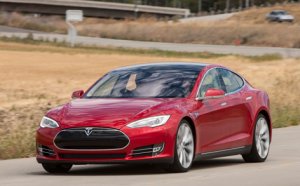 18, has become
18, has become 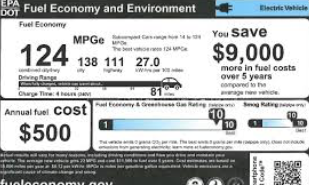 when adopted a few years ago, it may not be that effective in answering questions for car shoppers. The U.S. Environmental Protection Agency doesn’t have plans to make changes to the Motor Vehicle Fuel Economy Label, and no interviewed for the article had a clear vision implementing an improved comparison system for consumers looking at all-electric and plug-in hybrid vehicles.
when adopted a few years ago, it may not be that effective in answering questions for car shoppers. The U.S. Environmental Protection Agency doesn’t have plans to make changes to the Motor Vehicle Fuel Economy Label, and no interviewed for the article had a clear vision implementing an improved comparison system for consumers looking at all-electric and plug-in hybrid vehicles.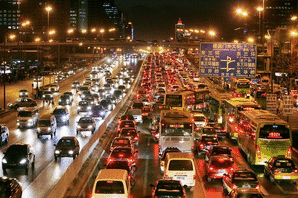 Leadership Group, which supports seeing continued progress on reducing emissions and oil consumption. Made up of Advanced Engine Systems Institute, the Aluminum Association, the Emission Control Technology Association, Manufacturers of Emission Controls Association, and Motor & Equipment Manufacturers Association, member companies want to have their voices heard as federal agencies prepare to finalize standards for phase two of the fuel economy rules. They’ve been making large investments to bring emissions-reducing technologies to the market and to meet domestic goals, and to make U.S.-built vehicles very competitive on the global stage. By the end of March, the U.S. Environmental Protection Agency is scheduled to announce whether it will keep the fuel economy and emissions standards in place, or begin work to modify them. The Automotive Technology Leadership Group would like to make sure that the National Highway Traffic Safety Administration, the state of California, and other states that follow California’s emissions standards, will have their concerns heard and coordinated within the EPA’s ruling.
Leadership Group, which supports seeing continued progress on reducing emissions and oil consumption. Made up of Advanced Engine Systems Institute, the Aluminum Association, the Emission Control Technology Association, Manufacturers of Emission Controls Association, and Motor & Equipment Manufacturers Association, member companies want to have their voices heard as federal agencies prepare to finalize standards for phase two of the fuel economy rules. They’ve been making large investments to bring emissions-reducing technologies to the market and to meet domestic goals, and to make U.S.-built vehicles very competitive on the global stage. By the end of March, the U.S. Environmental Protection Agency is scheduled to announce whether it will keep the fuel economy and emissions standards in place, or begin work to modify them. The Automotive Technology Leadership Group would like to make sure that the National Highway Traffic Safety Administration, the state of California, and other states that follow California’s emissions standards, will have their concerns heard and coordinated within the EPA’s ruling.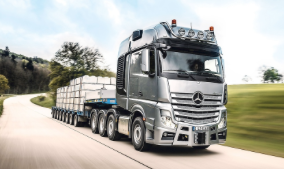 manufacturer of Mercedes Benz cars, trucks, and vans. Sources told Reuters that Geely’s main objective in the Daimler investment is sharing its EV technology to meet China’s demand for new energy vehicles. Zhejiang Geely, which owns Volvo, in December invested $3.9 billion in Volvo AB, the world’s second-largest truck maker after No. 1, Daimler Trucks. The Chinese company has also invested in Via Motors and an electric truck joint venture for China. Daimler has made comments about preparing to be the world’s leader in electrified trucks in the medium-duty and heavy-duty truck segments. Last week, the company released details on its eActros heavy-duty trucks still in development. The company said that the eActros drive system comprises two electric motors located close to the rear-axle wheel hubs. The truck can carry a payload of 11.5 tons, and will have a 125 mile range per charge. Energy will be stored in two lithium-ion batteries with an output of 240 kWh. Daimler is looking at 20 to 80 kW charge rates, which will be able to charge up the eActros in three to 11 hours.
manufacturer of Mercedes Benz cars, trucks, and vans. Sources told Reuters that Geely’s main objective in the Daimler investment is sharing its EV technology to meet China’s demand for new energy vehicles. Zhejiang Geely, which owns Volvo, in December invested $3.9 billion in Volvo AB, the world’s second-largest truck maker after No. 1, Daimler Trucks. The Chinese company has also invested in Via Motors and an electric truck joint venture for China. Daimler has made comments about preparing to be the world’s leader in electrified trucks in the medium-duty and heavy-duty truck segments. Last week, the company released details on its eActros heavy-duty trucks still in development. The company said that the eActros drive system comprises two electric motors located close to the rear-axle wheel hubs. The truck can carry a payload of 11.5 tons, and will have a 125 mile range per charge. Energy will be stored in two lithium-ion batteries with an output of 240 kWh. Daimler is looking at 20 to 80 kW charge rates, which will be able to charge up the eActros in three to 11 hours.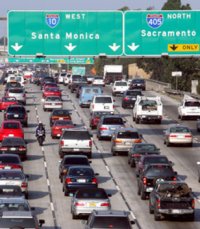 Feb. 12, is intended to attract a huge amount of additional money from states, localities, and private investors. The goal is to generate a total pot of $1.5 trillion to upgrade the country’s highways, airports, and railroads. Finding outside funding sources is essential to the policy changes moving forward, with non-federal government sources accounting for 70% of the formula for choosing infrastructure projects. Hawaii has taken steps toward adding new fees for electric vehicle owners, to get them to “pay their fair share” towards maintaining the state’s bridges and roads. Other states, including California, are likely to add more toll road fees as voters have turned down efforts to add other fees and funds coming from Washington are drying up; and some states are considering adding more EV taxes, similar to what Hawaii has been working on. President Trump has suggested adding federal gas taxes to raise more of the funds, but that’s been fading out in Congress. Republican legislators haven’t supported it, and want to gain support from voters as the mid-term election approaches. Adding a hefty gas tax may not go well with voters.
Feb. 12, is intended to attract a huge amount of additional money from states, localities, and private investors. The goal is to generate a total pot of $1.5 trillion to upgrade the country’s highways, airports, and railroads. Finding outside funding sources is essential to the policy changes moving forward, with non-federal government sources accounting for 70% of the formula for choosing infrastructure projects. Hawaii has taken steps toward adding new fees for electric vehicle owners, to get them to “pay their fair share” towards maintaining the state’s bridges and roads. Other states, including California, are likely to add more toll road fees as voters have turned down efforts to add other fees and funds coming from Washington are drying up; and some states are considering adding more EV taxes, similar to what Hawaii has been working on. President Trump has suggested adding federal gas taxes to raise more of the funds, but that’s been fading out in Congress. Republican legislators haven’t supported it, and want to gain support from voters as the mid-term election approaches. Adding a hefty gas tax may not go well with voters.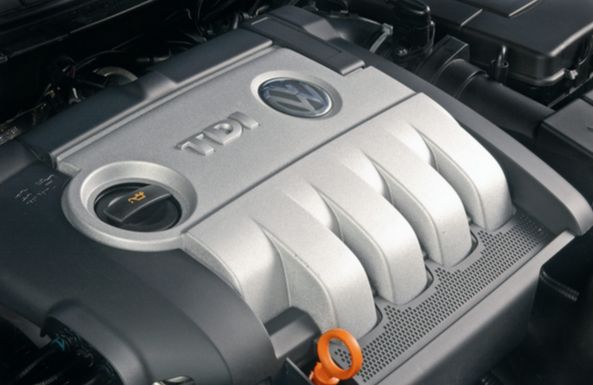 directed to the Environmental Mitigation Trust. That was spurred along in October with Wilmington Trust being named the VW settlement trustee, with several states expected to release their mitigation plans in the coming weeks and months. Fleets are in an excellent position to tap into funding sources for their upcoming clean vehicle initiatives.
directed to the Environmental Mitigation Trust. That was spurred along in October with Wilmington Trust being named the VW settlement trustee, with several states expected to release their mitigation plans in the coming weeks and months. Fleets are in an excellent position to tap into funding sources for their upcoming clean vehicle initiatives. 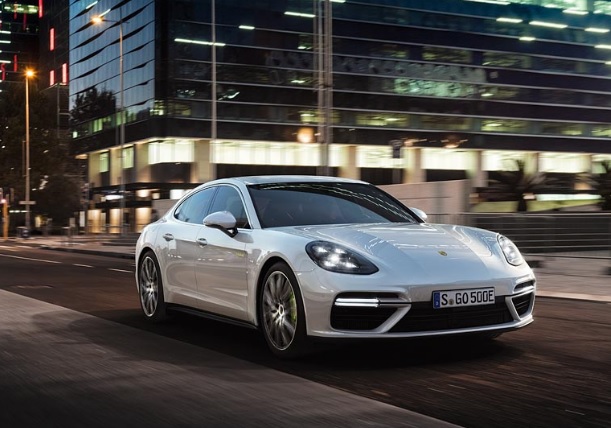 cars are no longer available. That’s taken place over the past couple of years after its parent company, Volkswagen, has emerged from the “dirty diesel” scandal. While VW has yet to be cleared (with news of air pollution tests on monkeys a few years ago hurting its image), it may be in better shape now that German competitor Daimler.
cars are no longer available. That’s taken place over the past couple of years after its parent company, Volkswagen, has emerged from the “dirty diesel” scandal. While VW has yet to be cleared (with news of air pollution tests on monkeys a few years ago hurting its image), it may be in better shape now that German competitor Daimler.  building an assembly plant in the Shangai area, but the two parties couldn’t reach an agreement on how the ownership structure would work. The national government wants it to be like all the others – a joint venture with local partners and Tesla wants to own the factory entirely. In October, Tesla had reached an agreement with the government in Shanghai to build a production facility in the city’s free-trade zone. Tesla would have been able to sidestep China’s steep tariffs by building a factory in the zone. Tesla has done well selling its electric cars in China, but an import tax of 25% raises the sticker price beyond what most consumers are willing to consider. A Tesla Model X made in the U.S. and shipped to China costs about 835,000 yuan ($132,000). Neither Tesla nor China responded to Bloomberg queries on the state of the potential agreement.
building an assembly plant in the Shangai area, but the two parties couldn’t reach an agreement on how the ownership structure would work. The national government wants it to be like all the others – a joint venture with local partners and Tesla wants to own the factory entirely. In October, Tesla had reached an agreement with the government in Shanghai to build a production facility in the city’s free-trade zone. Tesla would have been able to sidestep China’s steep tariffs by building a factory in the zone. Tesla has done well selling its electric cars in China, but an import tax of 25% raises the sticker price beyond what most consumers are willing to consider. A Tesla Model X made in the U.S. and shipped to China costs about 835,000 yuan ($132,000). Neither Tesla nor China responded to Bloomberg queries on the state of the potential agreement.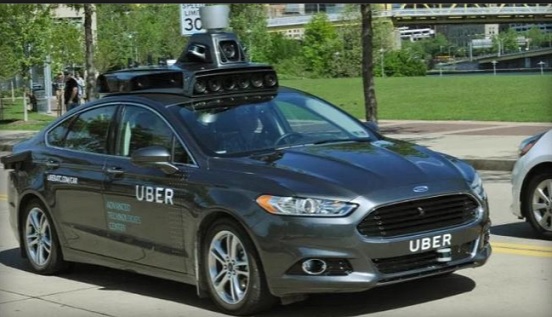 profitable business models and meet demands for real-world transportation. That would include doing it safely and addressing public concerns about how realistic self-driving cars would be to release on our roads.
profitable business models and meet demands for real-world transportation. That would include doing it safely and addressing public concerns about how realistic self-driving cars would be to release on our roads. Green Auto Market’s six year anniversary. The newsletter had started out prior as Green Automotive Digest with its Green Machine Digest blog. It became Green Auto Market in February 2012 with emphasis on the emerging business of clean vehicles, infrastructure, fuels and energy, advanced technologies, and the economic and political context behind all of it. It was monthly at that time, and went to weekly in June 2013 to a much longer list of readers. Special thanks to Editorial Advisory Board members for participating in monthly conference calls in recent years, especially Craig Shields, 2GreenEnergy; Peter Ward, Alternative Fuels Advocates, LLC; Joe Stergios and Greg Tabak, Enterprise Holdings; and Michael Taylor, Propane Education & Research Council.
Green Auto Market’s six year anniversary. The newsletter had started out prior as Green Automotive Digest with its Green Machine Digest blog. It became Green Auto Market in February 2012 with emphasis on the emerging business of clean vehicles, infrastructure, fuels and energy, advanced technologies, and the economic and political context behind all of it. It was monthly at that time, and went to weekly in June 2013 to a much longer list of readers. Special thanks to Editorial Advisory Board members for participating in monthly conference calls in recent years, especially Craig Shields, 2GreenEnergy; Peter Ward, Alternative Fuels Advocates, LLC; Joe Stergios and Greg Tabak, Enterprise Holdings; and Michael Taylor, Propane Education & Research Council. and microgram design and construction. The first hydrogen station will supply fuel cell buses starting this summer for the Orange County Transportation Authority’s (OCTA) Santa Ana, Calif., facility. Transit buses will be able to tap into 35 kilograms of hydrogen per bus in 6 to 10 minutes simultaneously from two fueling lanes. The station will be able to fuel the current 10 fuel cell buses and can go up to 50 buses. Infrastructure will be added to OCTA’s existing CNG fueling lanes. The current CNG station was designed and built by
and microgram design and construction. The first hydrogen station will supply fuel cell buses starting this summer for the Orange County Transportation Authority’s (OCTA) Santa Ana, Calif., facility. Transit buses will be able to tap into 35 kilograms of hydrogen per bus in 6 to 10 minutes simultaneously from two fueling lanes. The station will be able to fuel the current 10 fuel cell buses and can go up to 50 buses. Infrastructure will be added to OCTA’s existing CNG fueling lanes. The current CNG station was designed and built by 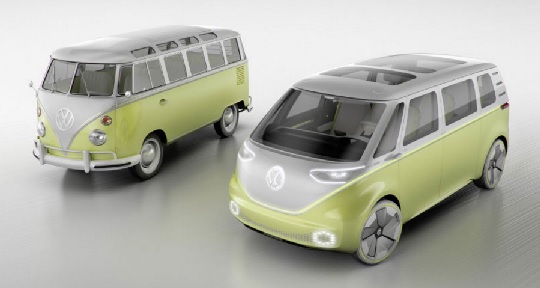 profitable model for selling and
profitable model for selling and 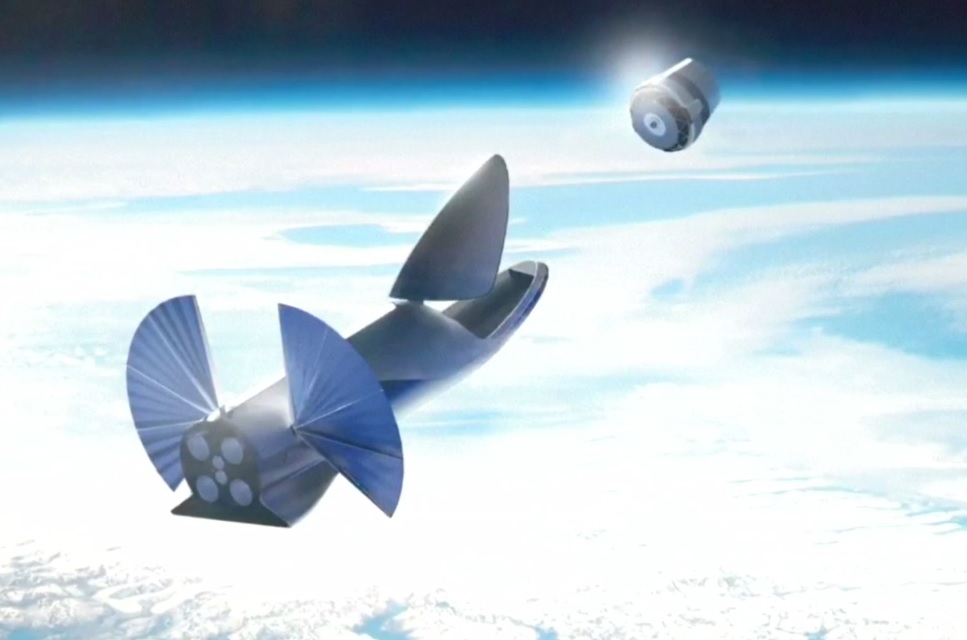 some time to visit the Kennedy Space Center less than an hour away in Cape Canaveral. You can take a bus tour and see historic sites for Gemini and Apollo launches in the 1960s, and get a good look at the future of NASA and its partners that include SpaceX and Boeing.
some time to visit the Kennedy Space Center less than an hour away in Cape Canaveral. You can take a bus tour and see historic sites for Gemini and Apollo launches in the 1960s, and get a good look at the future of NASA and its partners that include SpaceX and Boeing.